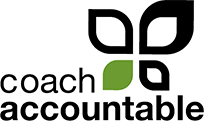Connecting your Clients with Group Directories
If you work with coaching groups that are highly collaborative, it can be nice for your group members to be able to connect with one another directly. With CoachAccountable Groups you can make a directory of group member information to enable just that.
From the settings tab of a given Group page you can find the controls and options for setting up your Group’s directory:

By default the directory for a given Group is not enabled. With a click you can switch to an opt-in directory (meaning each group member can choose whether or not to list themselves, and what information they which to share) or an all-inclusive one (meaning each group member is included, and you as coach choose which information is shared).
When enabled, the directory is visible to your clients by clicking the “Directory” button from their Group page:

What’s especially nice about this Group directory is that it auto-updates: client information is pulled directly from that client’s user account, meaning if members change their information like getting a new email address or adding a work number, the directory is automatically updated to reflect that new info.
Group Directories are just one more way to keep your group members connected with each other and thus more engaged with the group coaching process. Enjoy!








 I first really made the acquaintance of Marney
I first really made the acquaintance of Marney 
 This time I had the luxury of a CoachAccountable user coming to me, and in my own country no less! Kelly Talamo was in town from New Orleans for the day, and wanted to make a morning of meeting me at a coffee shop in my neighborhood.
This time I had the luxury of a CoachAccountable user coming to me, and in my own country no less! Kelly Talamo was in town from New Orleans for the day, and wanted to make a morning of meeting me at a coffee shop in my neighborhood.



